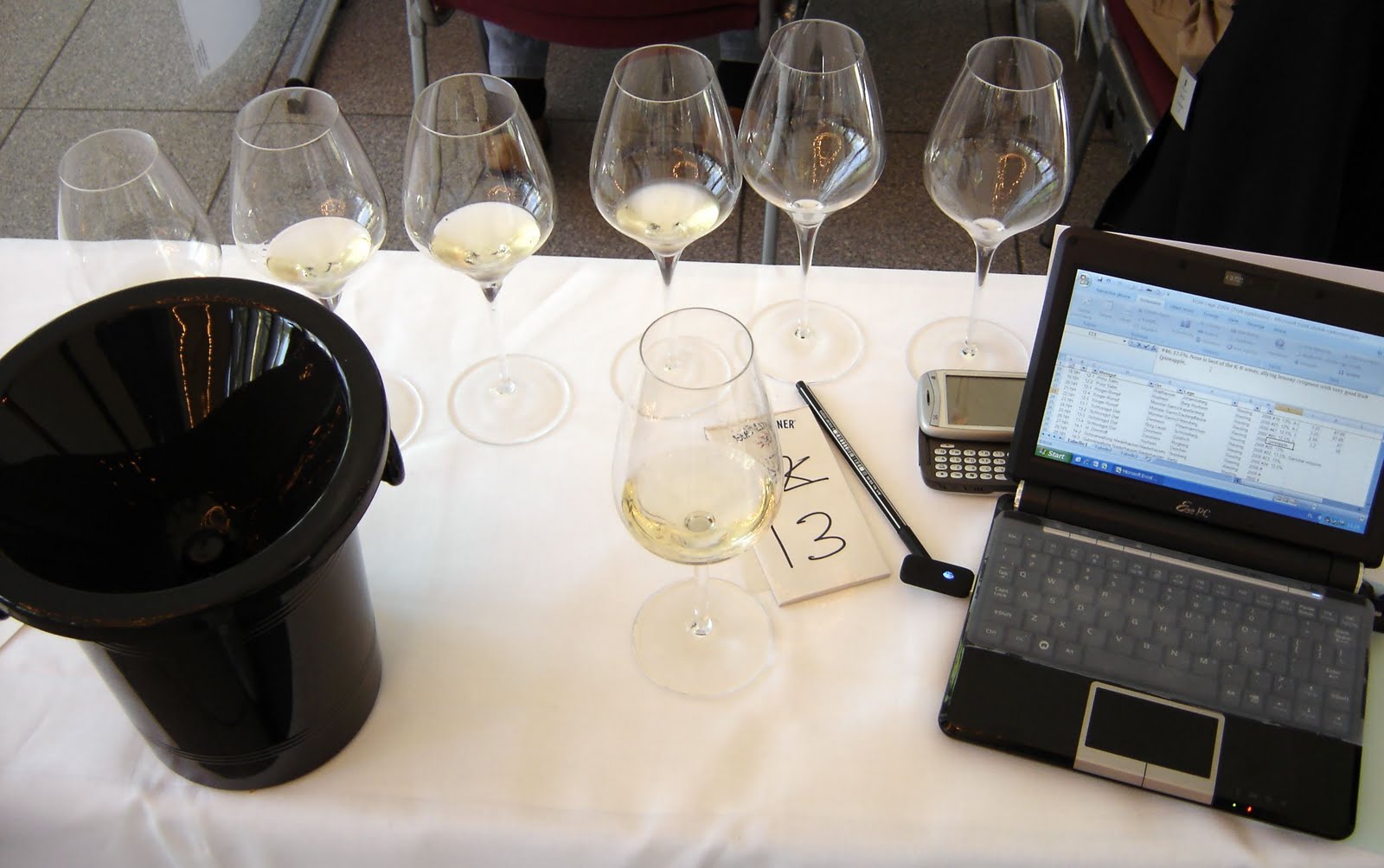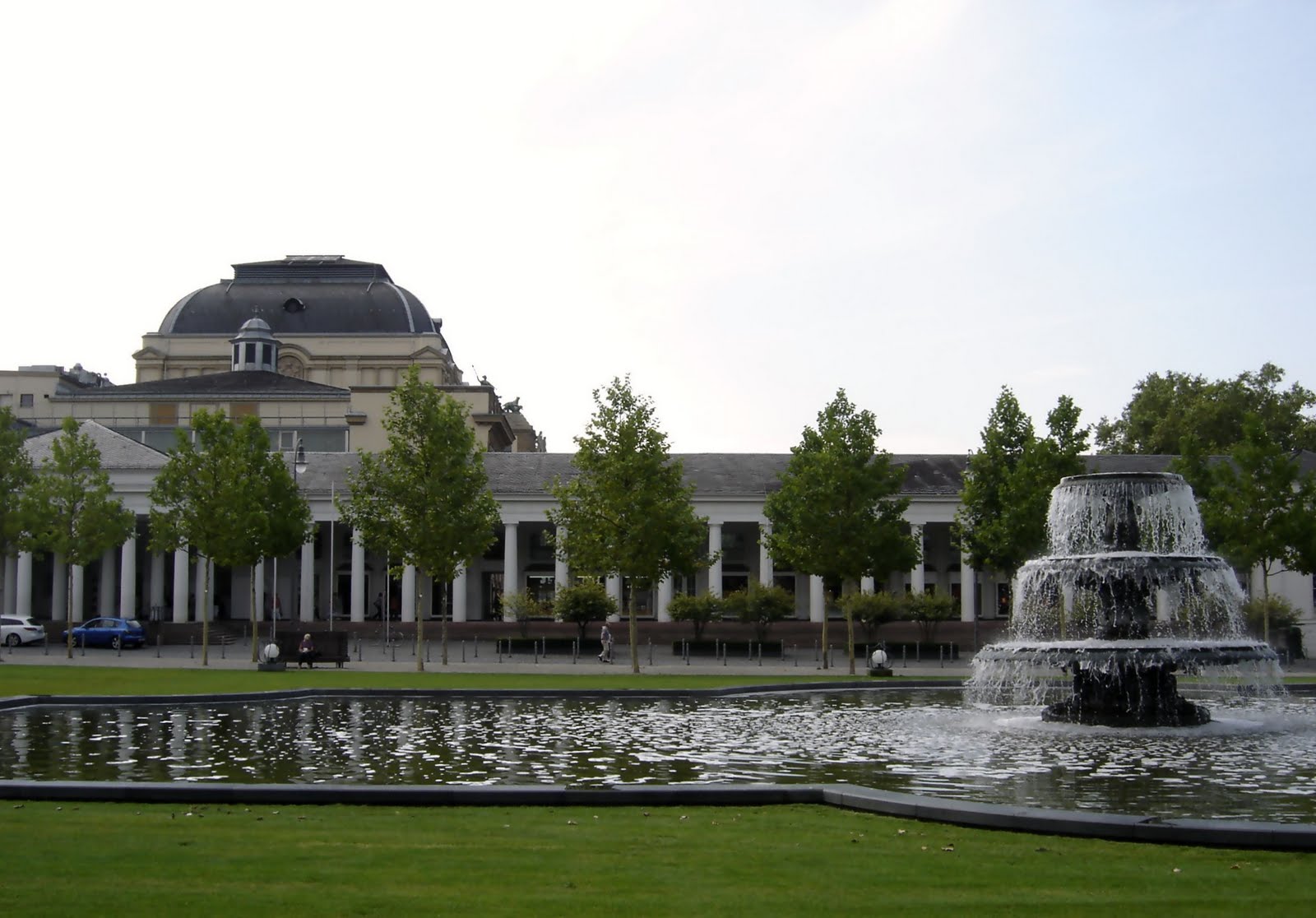Erste Lage Sneak Preview 2009
Posted on 25 August 2009
Greetings from Wiesbaden where I’m tasting through 250 Erste Lage wines before they are released on the market on September 1st. Organised by VDP association of estates, this yearly event is one of the best in a taster’s calendar. First, because it’s so well organised, and despite there being around 100 tasters the team of sommeliers who are pouring the wines is incredibly efficient. Second, because all the wines are good. It’s no exaggeration: these are all grand cru level wines that are the result of a stringent selection, meaning that the qualitative threshold is really quite high (translating into a numerical scale all these wines would generally score 85/100 or higher). Together with the fact that they’re predominantly white Rieslings with ripe acidity and no oak, it allows to taste a record-high amount of wines without really getting tired. (Last year, I did 160 in one day, with pretty consistent notes).
Other than to pick up a few bottles I will myself attempt to buy (this stuff sells out quickly) this tasting is really useful to examine the style of the latest vintage – in our case, 2008 for the white wines – in detail.
In short, 2008 in Germany is really rather average. It’s got mixed reviews – some producers saying it was dismal, others that it was good+ – but while it’s certainly no disaster, it’s the least interesting year since at least 2000. The weather conditions posed no great threat to the grapes but ripening was delayed, so that few vineyards ever reached a satisfactory phenolic ripeness to make great dry wines. In the long harvest period that stretched from late September through mid-November, the exact picking time was crucial. Too early and there was a streak of unpleasantly green, bitterish acidity in your wines (a frequent problem); too late and alcohol soared to 13.5% or more while phenolically the grapes were still not totally ripe, making for unbalanced wines that have no sufficient concentration or texture to support the alcohol.
Tasters at work.
Here are some bullet points about the vintage:
1. Low concentration: the wines are not exactly diluted but they lack the natural density of 2007 or 2006.
2. Green acidity: As mentioned, it’s what effectively differentiates the vintage from other cool ones such as 2004. Many wines have a vegetal, stemmy, tannic, bitterish impression on the finish. This might integrate with ageing, although it will never go away. In many wines it’s a major sensory problem.
3. Noticeable alcohol: Although the objective figures are lower than in 2007 or 2006 (most wine are at 13–13.5%, some have 12.5%, one single wine shows 14% on the label), the lack of natural concentration and fruit intensity makes these moderate amounts noticeable, and many wines display alcoholic heat on the finish.
4. Disappointing progression: Some Rieslings actually have a nice attack on the palate, filled with smacky fruit but quickly weaken from mid-palate on, leading to a diluted, fruitless, acid-driven finish that is very much an anti-climax. Winemakers will know it’s not so difficult to add interest to a wine’s bouquet or initial impact but the persistence is impossible to counterfeit.
5. Low fruit: I’m not so hostile to acidity (when it’s ripe), and can even take a bit of greenness when the wine has substance and expression of fruit. Few German 2008s have that, though. The incomplete phenolic ripeness of the grapes affected the fruit aromas and flavours, and often they haven’t at all developed. Too many wines can be described as ‘naked’, ‘hollow’, fruitless etc.
6. Terroir presence: This is the trickiest point. Minerality in itself is elusive. While high levels of acids together with some SO2 reduction can give an impression of minerality, this will never make up for lack of real terroir presence that can only be generated by ripe grapes and good concentration. While many secondary cru wines are showing what I call ‘nominal minerality’, only the greatest German terroirs – Scharzhofberger in the Saar, Pechstein in the Pfalz – are really expressing their full potential.
Erste Lage and Grosses Gewächs is a system that for the few years of its existence, has worked fairly well. It has simplified German wine, and put the best terroirs and best wines in the limelight. But it’s in hard times that you recognised the quality of an institution like this. In a substandard vintage like 2008, it was the good sense of the VDP association and the single growers to reduce the number and amoung of Erste Lage wines made, and release many wines in a lower category like Spätlese trocken or just Riesling trocken with a vineyard name. That hasn’t been done, and although I’ve heard a number of explanations from German producers and writers that ranged from viticultural to political, it will really be hard to justify the expense of 25–35€ (which is the price range for most Grosses Gewächs wines) on 80% of these bottles.
This article continues tomorrow with a full assessment of the different regions and the best recommended wines.

My workstation.



